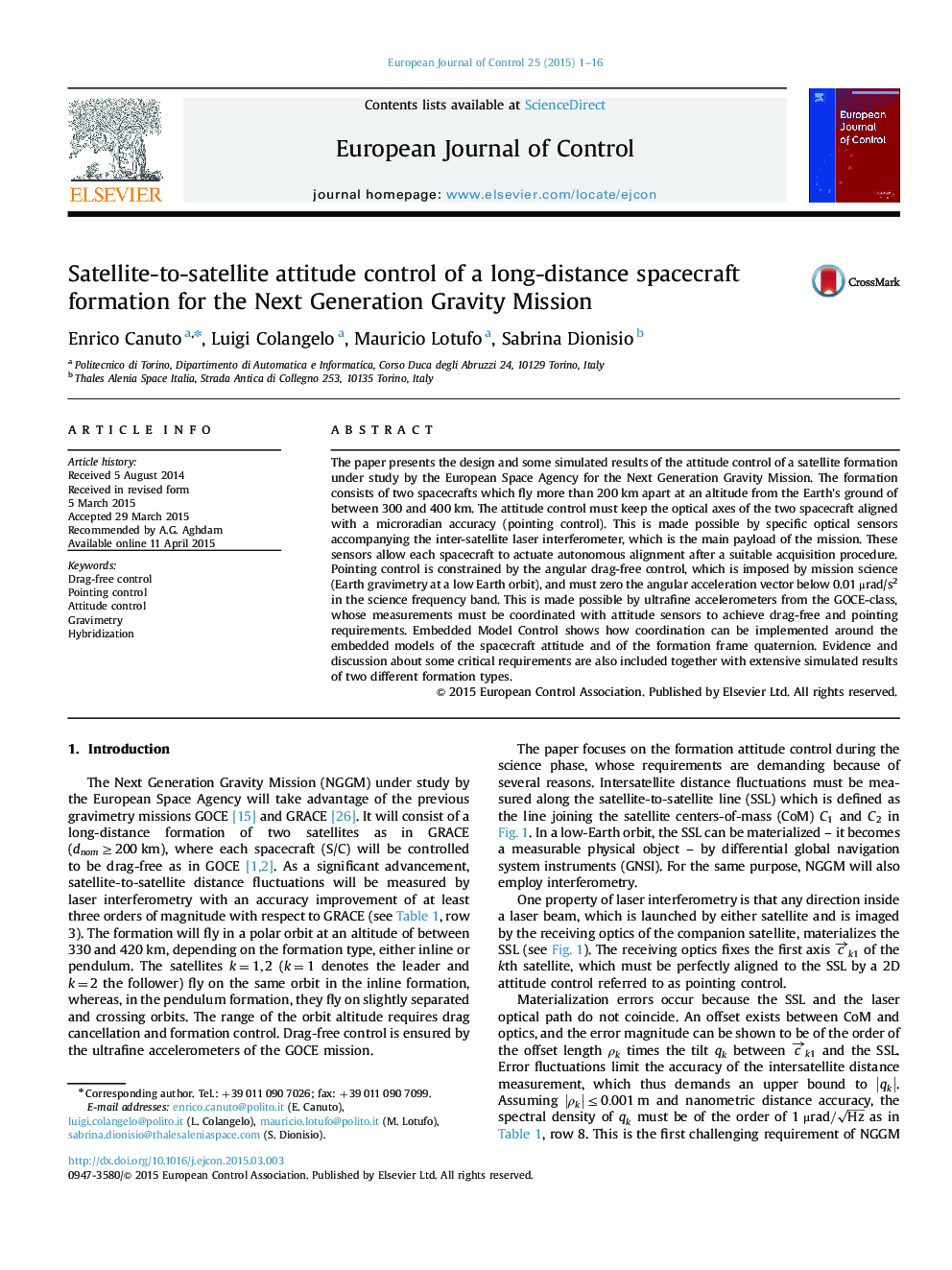| Article ID | Journal | Published Year | Pages | File Type |
|---|---|---|---|---|
| 707637 | European Journal of Control | 2015 | 16 Pages |
The paper presents the design and some simulated results of the attitude control of a satellite formation under study by the European Space Agency for the Next Generation Gravity Mission. The formation consists of two spacecrafts which fly more than 200 km apart at an altitude from the Earth׳s ground of between 300 and 400 km. The attitude control must keep the optical axes of the two spacecraft aligned with a microradian accuracy (pointing control). This is made possible by specific optical sensors accompanying the inter-satellite laser interferometer, which is the main payload of the mission. These sensors allow each spacecraft to actuate autonomous alignment after a suitable acquisition procedure. Pointing control is constrained by the angular drag-free control, which is imposed by mission science (Earth gravimetry at a low Earth orbit), and must zero the angular acceleration vector below 0.01 μrad/s2 in the science frequency band. This is made possible by ultrafine accelerometers from the GOCE-class, whose measurements must be coordinated with attitude sensors to achieve drag-free and pointing requirements. Embedded Model Control shows how coordination can be implemented around the embedded models of the spacecraft attitude and of the formation frame quaternion. Evidence and discussion about some critical requirements are also included together with extensive simulated results of two different formation types.
